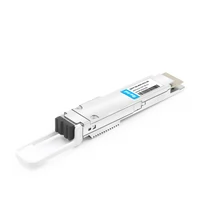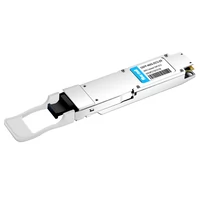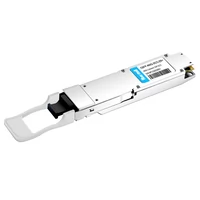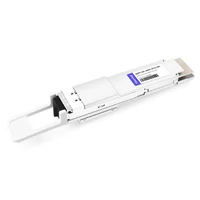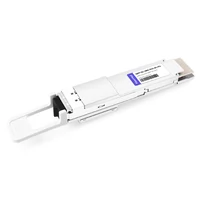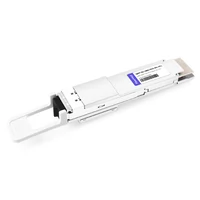In the fast-changing world of data centers, businesses must do a lot to keep up with higher bandwidth and efficiency needs. Companies have to leverage optical networking technologies if they are going to survive the exponential growth of data traffic. This article covers what 400G ZR transceivers can do and why they are essential in improving data center performance, such as enabling faster transmission rates, reducing latency periods, and streamlining overall infrastructure management, among other things. We will look at the technical specifications, deployment considerations, and use cases of these state-of-the-art systems so that you can know how best they can be applied in your current data center setup for optimal results.
Table of Contents
ToggleWhat is a 400G ZR Transceiver?
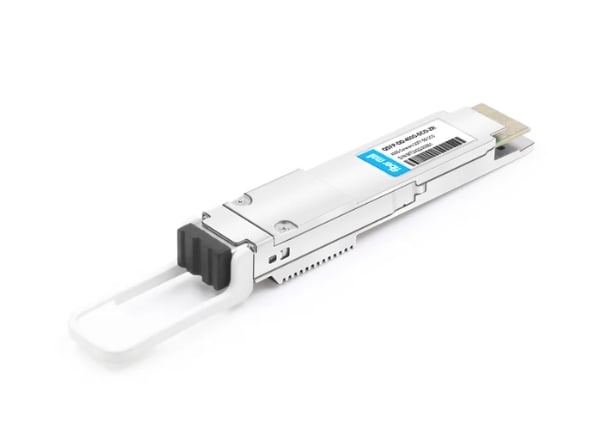
Understanding 400G Transceivers
High-speed optical transmission devices are 400G transceivers, allowing data centers to send and receive data at 400 gigabits per second. These systems leverage PAM4 (Pulse Amplitude Modulation with four levels) as one of the advanced modulation formats or technologies to double the existing data capability over optical fibers without needing additional cables. Long-distance communication is supported by this design for 400G ZR transceivers, including Digital Signal Processing (DSP) that improves signal integrity while reducing errors and hence can be used in high-density environments where bandwidth demand is crucially important. These gadgets provide uninterrupted connections between high-performance computing systems and, therefore, are indispensable for meeting cloud services’ growing needs in addition to data analytics, among other applications that consume large amounts of bandwidth.
The Role of QSFP-DD in 400G Transceivers
The Quad Small Form-factor Pluggable Double Density (QSFP-DD) is an essential part of 400G transceivers because it provides a small and efficient interface for high-speed optical communication. Allowing four lanes of 100G data transmission increases port density and thus supports a maximum bandwidth of 400G in the same space as its predecessors. The design of QSFP-DDs also makes them backward compatible with existing QSFP and QSFP28 transceivers so that data centers can upgrade their capabilities without changing much infrastructure, if any at all. Moreover, their strong electric specifications and supporting advanced modulation technologies are designed to meet performance needs in modern applications, guaranteeing reliable and efficient delivery of information under high-demand conditions.
Key Features of Coherent Optical Transceivers
Present-day high-capacity networks rely on coherent optical transceivers that have some peculiarities. The first one uses more complex modulation formats like QPSK (Quadrature Phase Shift Keying) and 16-QAM (16 Quadrature Amplitude Modulation), greatly increasing data transmission capacity over existing fiber infrastructure. Another feature is their ability to deal with signal deterioration caused by chromatic dispersion and polarization mode dispersion through digital signal processing (DSP), improving the quality and reach of signals. Also, coherent transceivers are made for long-haul transmissions that can go beyond 100 kilometers without regeneration while working with several wavelengths simultaneously. This enables efficient wavelength division multiplexing (WDM), hence maximizing spectral efficiency. All these characteristics enable data centers and telecom operators to cope with growing bandwidth needs while minimizing latency and operational expenditure.
How Does a 400G ZR Optical Transceiver Work?
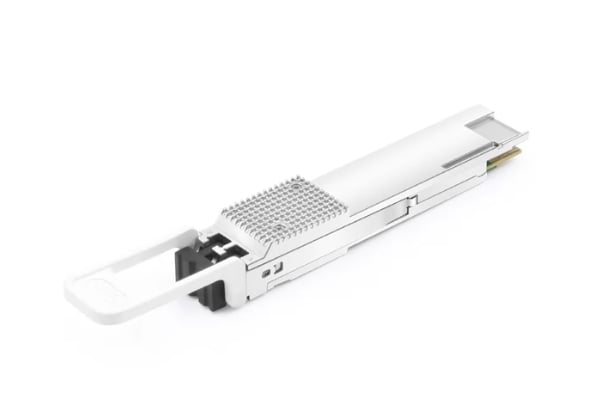
Mechanisms of Optical Transmission
Information is transmitted through optical transmission using light waves in optical fibers. The main idea is that light signals are transmitted and modulated to carry data. It starts with generating a laser-driven light signal which is then connected into an optical fiber. While moving along the fiber, it undergoes total internal reflection hence gets confined within its core even when bent or curved.
At the receiving end, photodetectors convert the light signal back into electrical form for processing and decoding. Among the key considerations are wavelength selection affecting attenuation as well as dispersion properties; amplification methods like Erbium-Doped Fiber Amplifiers (EDFA) used for boosting signal strength over long distances; and advanced modulation techniques found in coherent optical systems which further enhance capacity and reach of optical networks thereby enabling high data rates coupled with efficient spectrum utilization.
The Importance of Coherent Technology
The performance and efficiency of optical transmission systems are improved by coherent technology. This uses complex signal processing that can encode many information bits on a single light wave, increasing data rates significantly. Spectral efficiency is higher in coherent systems than in non-coherent ones because they operate at higher modulation levels, such as phase and amplitude modulations, which enable them to carry more data over the same fiber infrastructure. Furthermore, coherent detection schemes can cope better with noise so signals remain clear over long distances. Bandwidth can be saved by using coherent technology, as well as maximizing the total capacity of optical networks, which allows service providers to meet growing data needs at minimum cost. All these capabilities have positioned coherent optical systems as vital components within today’s telecommunication environment, where they continue driving various aspects relating to data center interconnections and long-haul communication network innovations.
Benefits of ZR and DWDM
Using zero-resistance (ZR) and dense wavelength division multiplexing (DWDM) technologies is important in modern telecommunications because it has many advantages. The aim of ZR technology is to ensure that there is a very fast optical transport system with ultra-low latency for efficient data transfer within the data centers and regional networks. It allows for optical networking to take place without electrical regeneration, hence reducing complexity as well as increasing reliability since its design supports this architecture.
On the other hand, DWDM allows various data channels to be transmitted simultaneously through one fiber optic cable using different light wavelengths. Essentially, this boosts fiber capacity by a great margin, thereby enabling service providers to make the most out of their infrastructure investments. Additionally, DWDM increases reachability in optical communication, considering its ability to utilize available bandwidth effectively, thus supporting higher data rates over longer distances. All these attributes are crucial in meeting the rapidly growing demand for bandwidth required by cloud computing among other data-intensive applications like streaming services, hence positioning them as critical elements towards realizing high-capacity optical networks in the future.
Why Choose 400G ZR Transceivers for Data Centers?
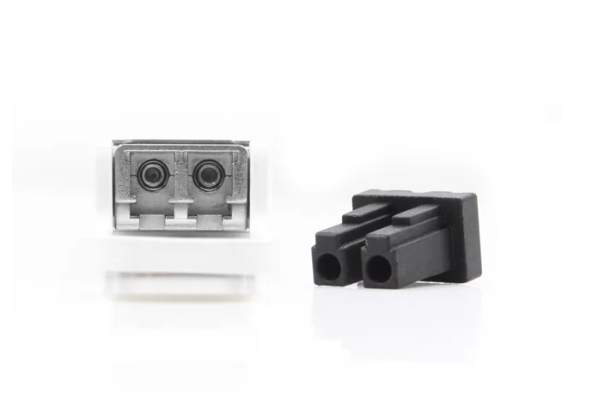
Advantages of High Data Rates
400G ZR transceivers are an example of a high data rate that can be used in data centers and offer many benefits. First, it allows for more throughput, meaning the data center can process larger amounts of data traffic simultaneously. This is especially important to businesses with data-intensive applications since it reduces latency, thus improving the entire system’s performance. Secondly, higher data rates can help reduce the interconnections needed, resulting in simpler network design and lower operational costs. Besides lowering costs, these rates enable support for emerging technologies like 5G, IoT, and advanced cloud services, making them necessary for future-proofing operations in a given center. In summary, investing more in capacity transceivers helps respond better to changing bandwidth needs faster.
Minimizing Power Consumption
For operational efficiency and cost reduction, minimizing power consumption in data centers is essential. The usage of 400G ZR transceivers can reduce energy dramatically by improving the efficiency of data transmission. These transceivers use advanced algorithms and technologies, including coherent optics and digital signal processing, to optimize performance with lower power consumption per gigabit of transmitted information. Besides, selecting energy-saving network equipment and applying appropriate cooling solutions help save power in general. Also, unnecessary power spending can be eliminated through tactics such as dynamic power management and virtualization, which ensure not only meeting but also the environmentally sustainable response of the data centers towards the increased bandwidth requirements. With all these strategies integrated into their operations, the carbon footprint for running a data center can be reduced significantly, making them work efficiently while minimizing environmental impact.
Compatibility with Modern Data Center Infrastructure
Companies looking to improve their operations must make their data center infrastructure compatible with modern technology. They allow for easier upgrades without extensive modifications by fitting well into current systems; this is possible due to such high-speed transceivers as 400G ZR. This promotes interoperability between communication devices since standardized optical interfaces are used, thereby ensuring effective communication of new equipment with those made before it. Additionally, with these advanced tools for managing data centers, network performance can be monitored and optimized at different hardware levels so that the system may adapt itself according to changing business requirements. Establishments can adopt cutting-edge technologies without discarding what has already been invested in through prioritizing compatibility.
What Key Factors Should You Consider When Selecting a 400G ZR Module?
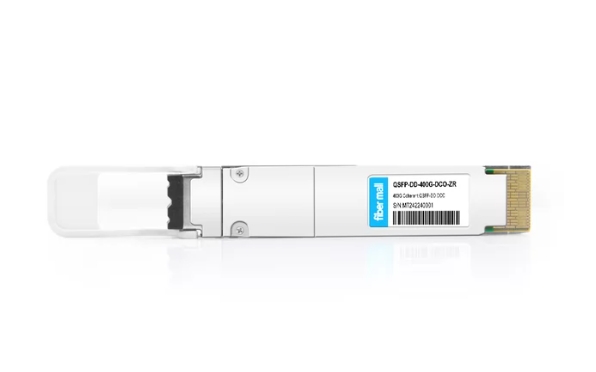
The Impact of Form Factor on Performance
The performance of a 400G ZR module dramatically depends on its form factor, which includes power usage, cooling requirements, and compatibility with current infrastructure. Usually, this is achieved through the use of standard form factors like QSFP-DD (Quad Small Form-factor Pluggable Double Density) or OSFP (Octal Small Form-factor Pluggable), which are designed to be space efficient while accommodating high-density applications. Significant companies have found that modules with smaller footprints tend to have lower thermal output, ensuring reliability when the system is under heavy load. Moreover, signal integrity and transmission distance could be affected by different form factors since some come with extra features such as self-testing capabilities. In conclusion, choosing an appropriate form factor is essential to optimize network efficiency in line with operational requirements.
Examining Tunable Wavelengths
According to several leading industry sources, dynamic adjustment of signal wavelengths is possible using tunable wavelength technology in 400G ZR modules, which helps optimize performance across various applications and network conditions. Flexibility in network design is increased when you can tune wavelengths; this lets operators make better use of the optical spectrum and improve signal-to-noise ratios. This means that systems can be quickly reconfigured where needed most or if there are large shifts in traffic demands on a network. Manufacturers also say that not only does it support more advanced modulation formats but that channel management is made easier too – lowering interference levels while increasing overall throughput rates at the same time. Knowing what these tunable wavelength abilities are capable of could greatly affect how people plan their networks and deploy them about future tech developments or operational targets, warn vendors.
Considering Duplex and Mux/Demux Requirements
When appraising requirements for optical modules regarding duplex and multiplexing/demultiplexing (mux/demux), it is important to recognize the differences between full-duplex and half-duplex communication methods. Full-duplex systems allow simultaneous transmission and reception of signals, which can increase data throughput and decrease latency. Conversely, half-duplex systems alternate between sending and receiving, thus introducing delays in communication.
Mux/demux configurations are vital for optimizing bandwidth utilization over multimode and single-mode fibers. This means that more than one wavelength can be combined onto a fiber at once using advanced designs for mux/demux to maximize network efficiency and capacity in terms of data. According to industry research findings, it is common for manufacturers to offer integrated solutions where mux/demux functions are incorporated into modules, improving system architecture overall and making installation easier. Ultimately, however, what matters most in increasingly challenging environments is whether one has thoroughly analyzed different duplexes and the technologies behind them while considering specific networks because this will help meet performance goals.
How to Implement 400G ZR Transceivers in Optical Networks?
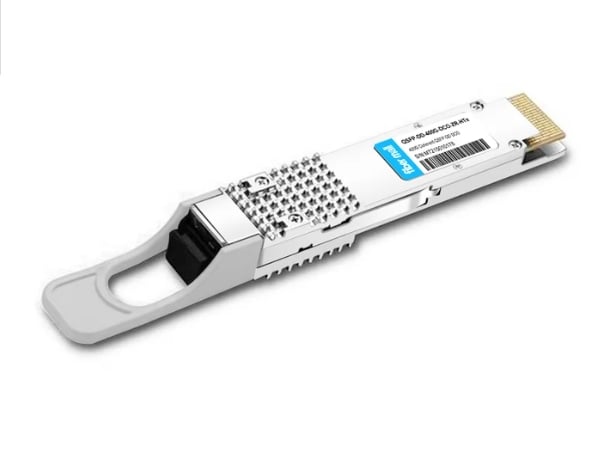
Steps to Integrate QSFP-DD Optical Modules
- Evaluate System Compatibility: Before integrating QSFP-DD optical modules, verify that the present network infrastructure is compatible with 400G technology. This involves checking for available ports and ensuring network switches and routers support the needed transceiver specifications.
- Pick Proper Transceiver Modules: Select appropriate QSFP-DD module types based on application requirements like distance and bandwidth. Standard options include Short-Range (SR), Long-Range (LR), and Extended Long-Range (ER), among others. Make sure optics are suitable for the deployment environment intended.
- Installation Process: Observe standard installation procedures, which often require safe shutdown of network devices, insertion of QSFP-DD modules into designated optical ports, and securement in place to prevent accidental disconnection.
- Connect Fiber Optics: Use the correct optical fiber cabling to link up QSFP-DD transceivers with the network. The fibers should be properly terminated and compatible with the transceiver’s specifications, either through LC or MPO connectors, depending on the design.
- Power Up and Configuration: After installation is complete, power up the equipment and configure network settings so that it can detect new transceivers. Adjust those related to optical performance and monitoring capabilities, among any other relevant parameters aimed at optimizing network functionality.
- Testing and Optimization: Conduct thorough tests to validate connection integrity and performance of QSFP-DD modules within the network. Employ diagnostic tools for monitoring signal quality, error rates, etc., and make necessary adjustments to enhance performance where needed.
- Documentation and Maintenance: Document the installation process and configuration settings adopted alongside performance metrics for future reference purposes. Establish a maintenance plan that involves periodic checks on modules and software updates, which will ensure continuous reliability and efficiency of the system.
Challenges in Deploying 400ZR Technology
Network operators must deal with various problems to guarantee successful implementation while deploying 400ZR technology. One such challenge is associated with infrastructure upgrading because the current optical networks may not be able to support the high bandwidths and low latencies demanded by 400ZR transceivers. Furthermore, there can be a compatibility problem between different types of optical fibers, especially if they fail to meet the requirements for fast transmission.
Another issue revolves around the complexities of managing and monitoring networks due to increased data rates, which call for more advanced network monitoring tools and techniques. Ensuring the proper vendor interoperability can also make deployment difficult, considering it needs careful integration and testing. In addition, there are also growing costs incurred on equipment upgrades and training for staff handling new technologies effectively.
Lastly, maintenance and troubleshooting become even more complicated during 400ZR because they require special knowledge. Hence, frequent assessments of network performance metrics should be done to keep it running at its best always. These are the problems that must be solved in order for us to fully maximize the use of 400ZR technology to enhance our networks’ capabilities.
Maintenance and Upkeep of Optical Transceiver Modules
Optical transceiver modules need to be maintained and taken care of to ensure they work well for a long time. Physical damage should be checked by routine inspections because such things can destroy signal integrity: contamination or corrosion of connectors. To eliminate dust and other contaminants, it is essential to clean optical interfaces using correct materials like isopropyl alcohol and lint-free wipes.
Moreover, monitoring operational parameters, including temperature levels and optical power, can give insights into module healthiness. This may include having an effective environmental control system, such as keeping proper humidity ranges within equipment racks used alongside transceivers to increase their lifespan even more. Updating firmware and software for these devices also helps improve performance optimization and incorporates the latest security enhancements. Storage or installation activities handling procedures must be done correctly during replacements, too; otherwise, you risk shortening the life span of an Optical Transceiver Module.
Reference Sources
Frequently Asked Questions (FAQs)
Q: What are 400G ZR transceivers, and why do they matter in modern data centers?
A: The 400G ZR transceiver is a high-speed optical module used in data center interconnection (DCI) applications, supporting 400 Gbps of data transmission. These modules are important for modern data centers as they meet high bandwidth demands, minimize latency, and consume less power than traditional technologies.
Q: Where do 400G QSFP-DD transceivers fit within the existing data center infrastructure?
A: The Cisco 400G QSFP-DD, among other 400G QSFP-DD transceivers, has been designed to comply with the QSFP-DD form factor so that they can be easily integrated into current data center hardware such as routers or switches without substantial modifications.
Q: How does coherent technology optimize performance in data centers?
A: Coherent technology, like 120km capable QSFP-DD DCO 400G modules, uses advanced modulation methods for improved signal integrity over long distances. This ensures reliable transmission and higher-quality reception of information, which ultimately optimizes data center performance.
Q: Can you differentiate between the QSFP-DD 400G and CFP2 form factors?
A: QSFP-DD 400G and CFP2 are different optical transceiver form factors. However, compared to CFP2, QSFP28 is newer, smaller. It has a higher port density, making it more suitable for use in environments where space is limited but many connections must be made simultaneously. CFP2 is still widely used mainly for coherent optics based on modules operating at speeds up to 200-600Gb/s.
Q: How does multiplexing/demultiplexing technology improve the utilization of 400G ZR transceivers?
A: Mux/demux technology enables the combination of several optical signals onto one fiber pair and their breaking out again at the destination. It is one way to enhance the utilization of 400G ZR transceivers by maximizing the use of fiber and improving data transmission efficiency.
Q: What are the benefits of employing 400G coherent QSFP-DD transceivers for long-haul DCI?
A: Higher data rates, better signal quality and extended reach up to 120 km or beyond make 400G coherent QSFP-DD transceivers a good choice for connecting distant data centers.
Q: In what way do compatible 400G DWDM tunable QSFP-DD transceivers contribute to the flexibility of networks?
A: Compatible 400G DWDM tunable QSFP-DD transceivers enable network operators to adjust wavelengths to optimize spectrum utilization flexibly. This feature is essential when dealing with changing network needs and improving scalability.
Q: What does the QSFP-DD MSA mean, and how has it impacted the market?
A: The significance of the Multi-Source Agreement (MSA) for Quad Small Form-factor Pluggable Double Density (QSFP-DD) lies in its ability to regulate this form factor, creating room for various suppliers and promoting competition within the industry. This standardization allows different vendors to develop compatible 400G DCI optics, encouraging innovation and lowering costs.
Q: How do LC connectors based on optical interface specifications affect the deployment of 400G ZR transceivers?
A: Since LC connectors are widely used in optical interfaces, they determine which fiber patch cords can be used when deploying 400G ZR transceiver modules. Since these interfaces are already commonplace, integration becomes more accessible, and compatibility with existing fiber optic infrastructure is guaranteed.
Q: What can we expect in future trends regarding 400G ZR and coherent optics?
A: We should expect more improvements in power efficiency-related aspects, higher degrees of silicon photonics integration, and wider adoption of open networking standards such as OpenZR+. These advancements will improve performance levels and reduce costs while providing greater flexibility for data center interconnection solutions.
Related Products:
-
 QSFP-DD-400G-DCO-ZR 400G Coherent QSFP-DD DCO C-band Tunable Optical Transceiver Module
$6000.00
QSFP-DD-400G-DCO-ZR 400G Coherent QSFP-DD DCO C-band Tunable Optical Transceiver Module
$6000.00
-
 OSFP-400G-DCO-ZR 400G Coherent OSFP-DCO ZR C-band Tunable Optical Transceiver Module
$7000.00
OSFP-400G-DCO-ZR 400G Coherent OSFP-DCO ZR C-band Tunable Optical Transceiver Module
$7000.00
-
 OSFP-400G-DCO-ZR+ 400G Coherent OSFP-DCO ZR+ C-band Tunable Optical Transceiver Module
$7000.00
OSFP-400G-DCO-ZR+ 400G Coherent OSFP-DCO ZR+ C-band Tunable Optical Transceiver Module
$7000.00
-
 QSFP-DD-400G-DCO-ZR+ 400G Coherent QSFP-DD DCO C-band Tunable Optical Transceiver Module
$6500.00
QSFP-DD-400G-DCO-ZR+ 400G Coherent QSFP-DD DCO C-band Tunable Optical Transceiver Module
$6500.00
-
 QSFP-DD-400G-DCO-ZR-HTx 400G Coherent High TX Power QSFP-DD DCO ZR C-band Tunable Optical Transceiver Module
$6500.00
QSFP-DD-400G-DCO-ZR-HTx 400G Coherent High TX Power QSFP-DD DCO ZR C-band Tunable Optical Transceiver Module
$6500.00
-
 QSFP-DD-400G-DCO-ZR+-HTx 400G Coherent High TX Power QSFP-DD DCO OpenZR+ C-band Tunable Optical Transceiver Module
$7000.00
QSFP-DD-400G-DCO-ZR+-HTx 400G Coherent High TX Power QSFP-DD DCO OpenZR+ C-band Tunable Optical Transceiver Module
$7000.00

